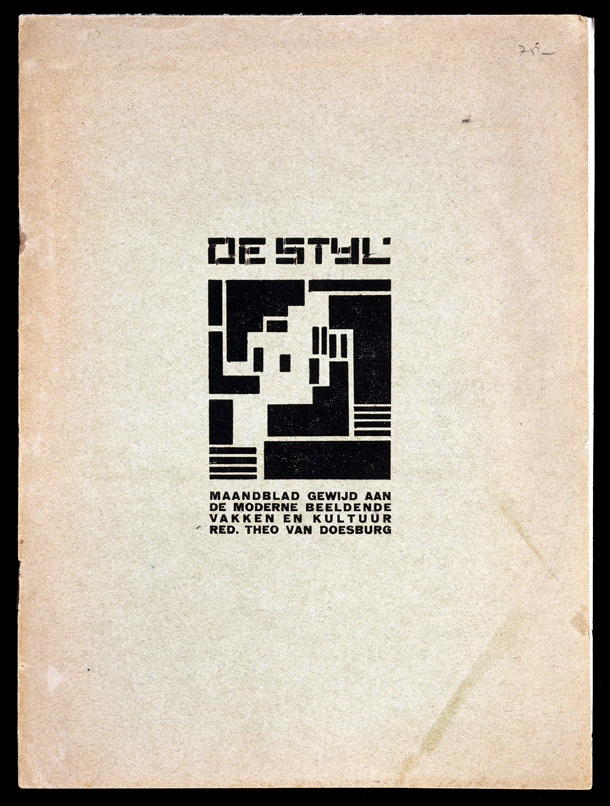DE STIJL
 |
| Front cover of De Stijl, periodical, edited by Theo van Doesburg, 1919. |
typographers, interior designers and decorative artists, musicians, poets and dramatists.
This new movement was all about simplicity in form. The Dutch artist wanted to create a utopia of spiritual harmony to create a an abstracted view of reality by making use of essential basic forms and colours. In their works they represented an abstracted image which consisted of basic shapes along with horizontal and vertical line which created a grid like layout incorporating the basic primary colours of blue, red and yellow along with black and white. This use of only very basic forms and minimal colour scheme reinforced their view of the new age of images. The De Stijl artist main aim was to represent an abstracted universe through reduction and simplicity by making use of only the essentials ( basic forms and primary colours).
 |
| 'Cow' Teo Van Doesburg 1918 (pencil sketch) |
 |
| 'Cow' Teo Van Doesburg 1918 reduction in form |
 | |
|
Teo Van doesberg was an important artist in the De Stijl Movement, but the most famous artist of the style was 'Piet Mondrian'. Mondrian was the main figure of De Stijl. Mondrian was a non-representational painter, which later evolved into his own unique style, which he coined “neo-plasticism.” .
His art was not based on outside artistic influences or on traditional techniques. Mondrian had a strong spiritual and philosophical belief which played a key role in developing his work.y .
His works was intended at helping humanity through aesthetic beauty and breaking from a representational form of painting. Although his early work was representational, he slowly developed his artistic philosophy, his works first were influenced by the cubist manner which then progressed to a pure abstraction and non-representative style.
 |
| Composition A Piet Mondrian 1923 oil on canvas Galleria Nazionale d'Arte Moderna e Contemporanea, Rome, Italy |
 |
| Composition No.10 Piet Mondrian 1939-42 oil on canvas Private Collection |
 |
| Broadway Boogie Woogie Piet Mondrian 1942 oil on canvas Museum of Modern Art, New York, USA |
Biblography
(Uploaded on 8 May 2011) (accessed 18th Nov 2013 at 12:06pm)
(Uploaded on 26 June 2012) (accessed 18th Nov 2013 at 12:11pm)
Website © 2013 The Solomon R. Guggenheim Foundation (SRGF)(accessed 18th Nov 2013 at 12:27pm)
published © 1996- (accessed 18th Nov 2013 at 12:27pm)
(accessed 18th Nov 2013 at 12:27pm)
published 2013 (accessed 18th Nov 2013 at 11.43am)
No comments:
Post a Comment